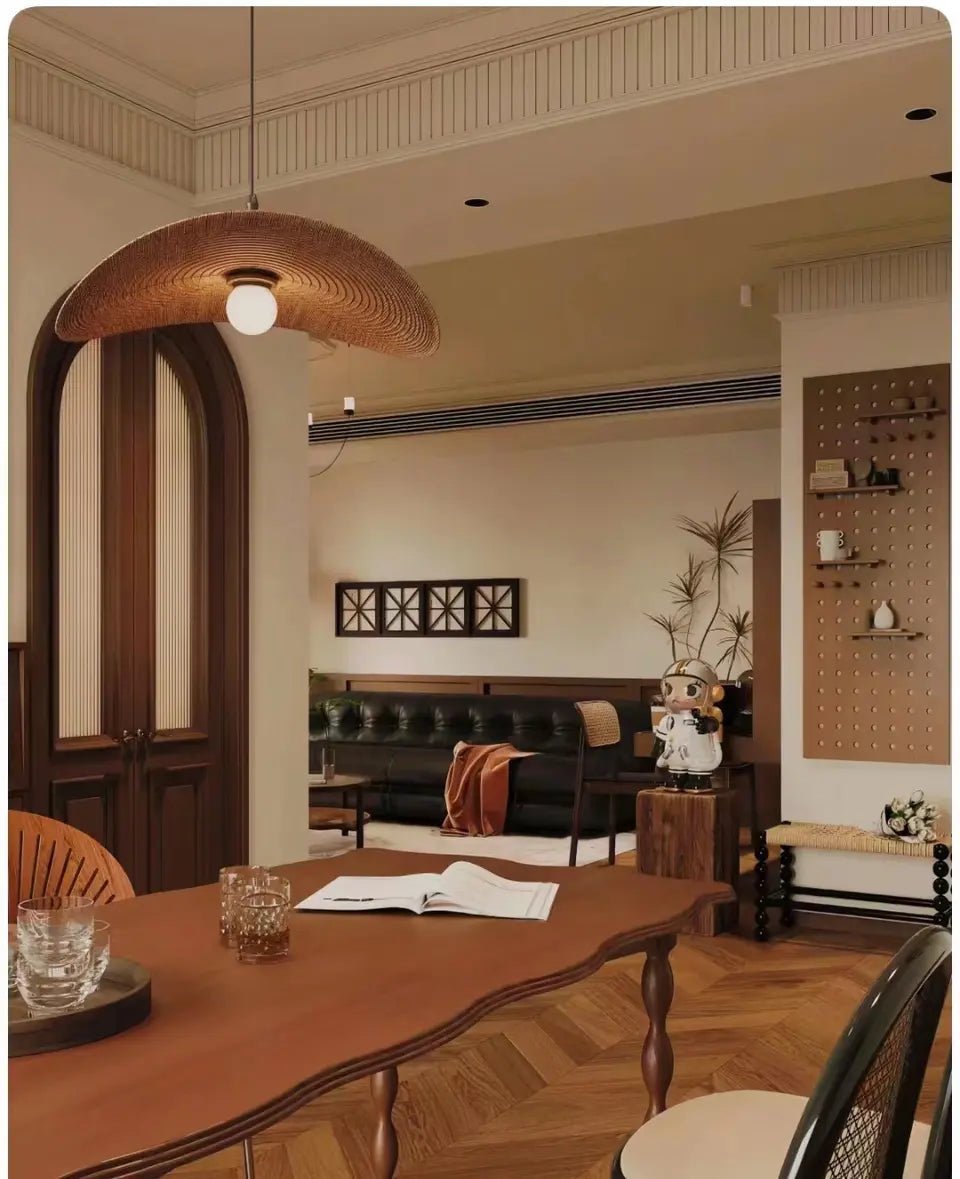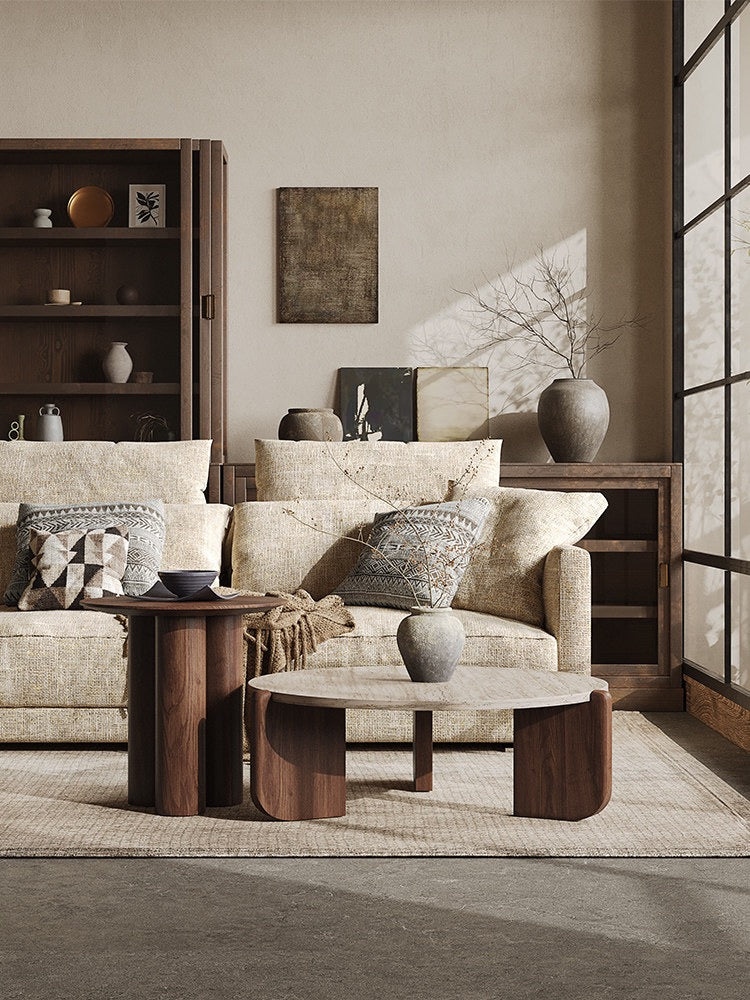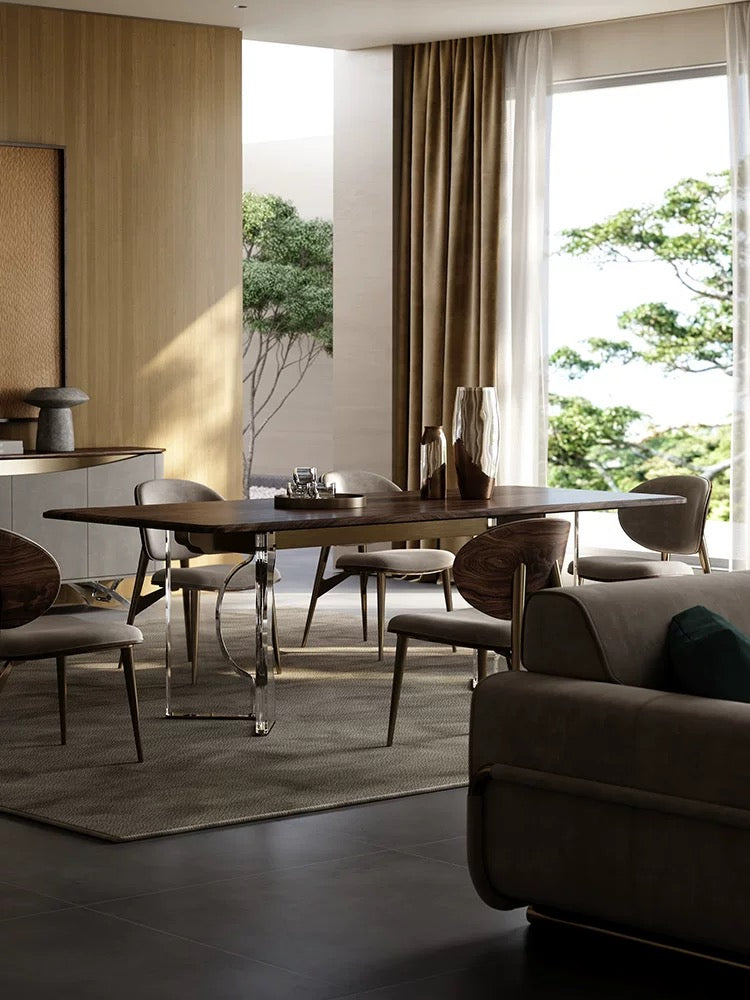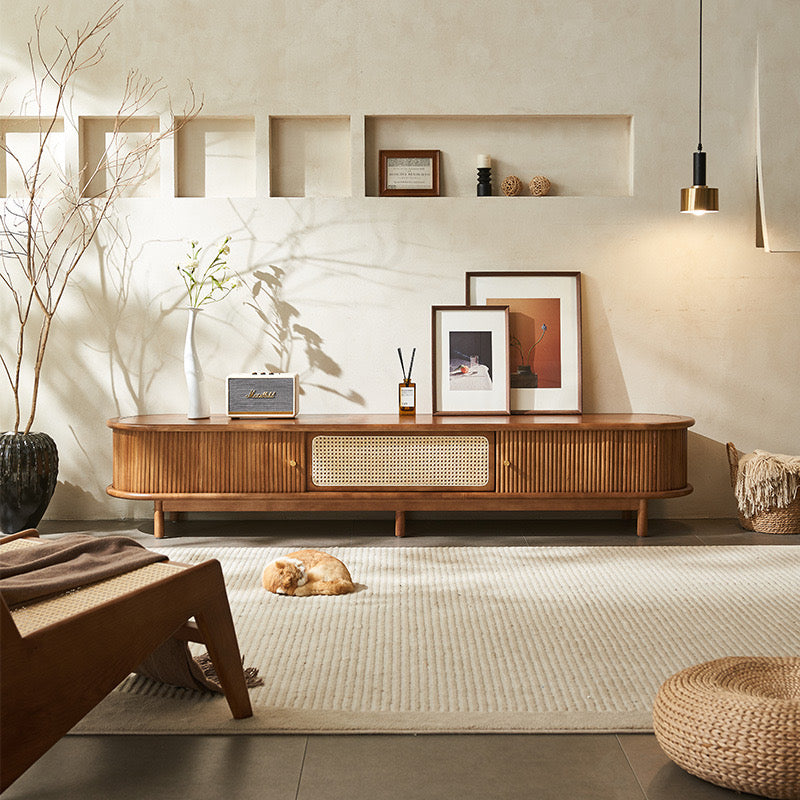
The Most Misunderstood Style: Wabi-Sabi Is Not “Japanese Style”
, by Magico Home, 4 min reading time

, by Magico Home, 4 min reading time
Wabi-sabi is one of the most misunderstood trends in modern interior design.
It is not Japanese style—and certainly not what some mockingly call “Syrian chic.”
In essence, wabi-sabi is the latest modern interpretation of natural, tranquil aesthetics. It draws inspiration from simplicity, imperfection, and the passage of time, but it cannot be equated with traditional Japanese interiors.
While Zen philosophy does exist in Japanese aesthetics, the furniture and architecture of Japan are not what created the global wabi-sabi movement. In fact, what the world now calls “wabi-sabi style” has its true origins in modern French design, especially the works of Le Corbusier and his circle of followers.

1. Wabi-Sabi Is Not “Bare Concrete” or “War-Zone Minimalism”
Many confuse wabi-sabi with unfinished or industrial interiors. They see empty rooms, rough walls, and minimal furniture, and assume this must be an easy or inexpensive look to achieve.
Nothing could be further from the truth.
Behind those serene, empty-looking spaces is often complex craftsmanship and high cost. Hidden storage keeps everyday life out of sight. Precision construction eliminates baseboards and visible joints. Even a single misaligned line would break the illusion of calm.
When celebrities like Kanye West and Kim Kardashian showcased their wabi-sabi-inspired home—flat walls, invisible doors, and unbroken geometry—it wasn’t simplicity; it was precision and expense.
Wabi-sabi isn’t about poverty or minimalism for its own sake. It’s about discipline, structure, and intentional quietness.

2. Wabi-Sabi Is Not Japanese Style
The term wabi-sabi is indeed Japanese—it refers to finding beauty in imperfection and tranquility. But the international aesthetic that borrows this name has evolved far beyond Japan.
Traditional Japanese interiors are mostly timber-based, rooted in architecture that balances indoors and outdoors. Modern Japanese furniture, on the other hand, often follows Scandinavian Mid-Century Modern (MCM) influences and does not naturally fit the wabi-sabi mood.
In contrast, modern wabi-sabi interiors combine French minimalist design with Southeast Asian craftsmanship: solid-wood furniture, natural linens, wool, and raw stone textures. This aesthetic has more in common with modern Parisian restraint than with tatami mats or shoji screens.
3. Color: Restraint Defines Wabi-Sabi
Color is one of the easiest ways to identify this style. Wabi-sabi uses a narrow palette—black, white, and earthy neutrals.
Bold hues are rare. Even when used, colors are heavily muted, rich in grey tones, so they never feel aggressive.
The black isn’t jet black—it’s blue-black, like washed ink. The white isn’t pure—it’s the creamy tone of natural wool. The rest is grounded in the warm earth tones beloved by the French. These colors evoke calm, depth, and quietude.

4. Wabi-Sabi Is Not About “Refinement”—But It Is Refined
The wabi-sabi look is unpolished by design. But that doesn’t mean it’s crude or careless. In fact, achieving true wabi-sabi requires extremely refined craftsmanship.
Take Magico’s teak furniture, for instance. Each piece is made from Burmese or Indian teak, chosen for its rich grain and color variation. This wood is expensive—not because it looks perfect, but because it looks alive. Its natural imperfections can’t be replicated with cheaper substitutes.
Or consider upholstery: a sofa wrapped in Italian boucle wool or genuine lambskin might appear modest at first glance, yet its softness and comfort reveal its sophistication.
Wabi-sabi doesn’t shout luxury—it whispers it. The goal isn’t surface-level perfection, but depth, texture, and authenticity.
5. Decay Is Not Wabi-Sabi
Some mistake the aesthetic of aging for the aesthetics of neglect. Wabi-sabi embraces patina and imperfection, but it never celebrates decay.
A table made of charred wood with visible grain may look worn, yet the process of carbonization is an advanced, costly technique. The same goes for walls treated with microcement or layered artisanal plaster—materials chosen precisely for their aged, tactile beauty.
So while wabi-sabi evokes a sense of weathered calm, it is not about cheapness or ruin. It is, paradoxically, the art of crafting imperfection at the highest level of care.

The Essence of Wabi-Sabi
At its heart, wabi-sabi reflects a modern longing: the desire for peace and simplicity in a fast, pressured world. It resonates with people who crave calmness, honesty, and space for thought.
Yet creating this serenity is anything but simple. True wabi-sabi interiors require:
•Large, open spaces to hold visual silence.
•Premium natural materials like teak, oak, travertine, lambskin, and linen.
•Matte, textured finishes that absorb light instead of reflecting it.
•Muted color palettes that quiet the mind.
In short: wabi-sabi is not minimalism, not Japanese traditional style, and not imperfection for its own sake. It is a modern design philosophy that finds luxury in restraint—and warmth in honesty.
At Magico, we believe wabi-sabi isn’t a trend. It’s a return to sincerity, an invitation to slow down, and a reminder that true beauty lies not in what’s flawless, but in what feels real.



